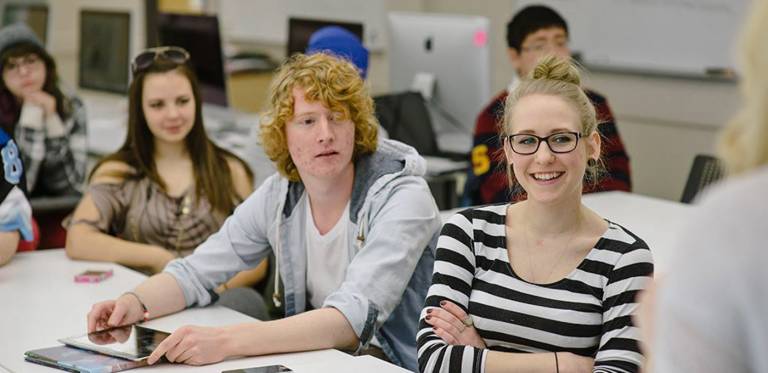14-19 education and training in England
The concept of an extended upper secondary education phase revisited.

6 July 2017
By Lynne Rogers.
14–19 education and training has been a site of both political contestation and constant reform for at least the last 30 years. The international and national responses to macro factors, such as globalisation, technological advances, migration, raise issues for the purpose and shape of education systems and more particularly upper secondary education as it moves hesitantly towards universalism.
The current socio-economic context in England, together with the raising of the participation age to 18, requires a re-examination of the nature of the upper secondary education phase in England. Current curriculum arrangements beyond the age of 14 do not constitute a sufficiently holistic curriculum fit for the requirements of the modern age and are out of step in terms of breadth and time spent in study when compared with most other high performing upper secondary education systems.
There is also no sense of a substantial phase, because education participation is still seen as two years added on at the age of 16, with those who fail to attain adequately in GCSE effectively given no option to remain on the general education track. Institutional arrangements are highly fragmented and inefficient. There is relatively low employer engagement in the education of 14– 19-year-olds in comparison with some other European countries, resulting in a weak vocational and technical system.
An underlying aim of a universal upper secondary phase is one in which all learners can progress at their own pace. Central to this is removing or at least reducing the role of the GCSE selection barrier at 16.
It can be argued that selection at 16 has depressed post-16 participation and attainment because it forces young people to reach a certain level of attainment in general education at a single point rather than when they are ready. This idea of a fixed, age-related, internal selection point could be seen as increasingly redundant in an era of Raising of the Participation Age.

The alternative approach is to conceive of upper secondary education as starting at 14 rather than 16. This marks the beginning of a young person’s curriculum and qualifications journey and the transition from child to adult in which they have between four or five years (18/19) to mature and achieve.
An extended and more unified phase would better aid young people’s development during the period of adolescence, more fully support individual transition needs and offer a meaningful choice to all young people. Increased opportunities for work experience or work placements during this phase would support young people in making positive decisions about their futures based on authentic understandings of different professional and technical occupations.
This does not mean a one-size-fits-all approach to the curriculum or necessarily a wholesale move to a new 14–19 institutional base. Rather, it suggests putting the curriculum at the centre of upper secondary education and building on the strengths of the successful institutions now in existence, but expecting and incentivising them to work in a collaborative manner with social partners in their localities to deliver a more comprehensive and cost-effective provision for all 14– 19-year-olds.
The future direction for England should be towards the concept of an expanded and extended upper secondary education phase that need to:
- be values and curriculum-led;
- involve the broadening of general education learning and the enrichment of vocational learning – enhancements available to all learners according to the spirit of creativity and innovation by all;
- be based on the enhancement of existing qualifications rather than the introduction of politically inspired new ones;
- be served by strong local learning systems underpinned by heightened social partnership and institutional collaboration;
- enhance the level of self-awareness and agency of the learner to be able to take maximum advantage of a more comprehensive and coherent system;
- be underpinned by a more participative, stable and evolutionary policy process that strengthens the role of educational and social partnership over that of top-down policy-making by politicians.
 Close
Close

